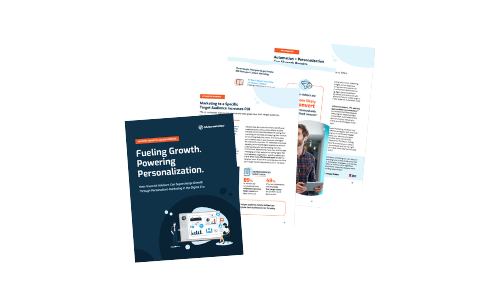 You’re a financial advisor. Have you given much thought to how powerful your online presence is and why should you care? Put yourself in your prospect’s shoes. What will they do first to screen you for the right “fit”? You guessed it: They look at your digital footprint.
You’re a financial advisor. Have you given much thought to how powerful your online presence is and why should you care? Put yourself in your prospect’s shoes. What will they do first to screen you for the right “fit”? You guessed it: They look at your digital footprint.
What shows up when they search your name? Do those results paint an accurate and positive picture of you and your financial advisory services? Are you managing and shaping those results to create the image you desire, or do you just let them happen, leaving everything to chance. At best, you’ll have little impact, and, at worse, find damaging outcomes.
Now with ubiquitous access to the Internet through their phone, tablet, or computer, consumers of all ages turn first to your online footprint as a source of credibility to learn about you. Combine access with impatience and the result equals a significant decrease in consumer’s “due diligence time investment” on a per advisor basis.
If you don’t win the prospect over in the first return of Google results, he or she likely moves on to the next advisor. Financial Advisors and online presence: It matters.
So how can you help yourself and your firm? Follow these 3 steps to power up your online reputation:
Step 1: Lay A Strong Foundation
- Create a modern website that provides visual depiction of target clients, audience-focused copy, welcoming videos, and clear concise service descriptions. Use keywords in your title tags to match to your geographical location and search terms for your service. Check how your design looks on mobile platforms, too.
- Claim your online directory listings with primary providers: Google Places, Yahoo! Local, BingPlaces, Yelp, and local directories. Develop your listing with a target client description, services, photos, videos, and your logo.
- Build out your profiles through industry associations or memberships you hold (e.g. CFP Board, FPA, NAPFA) and take advantage of independent platforms (like GuideVine) where you can become listed as part of the network.
- Brand and complete your social media profiles: LinkedIn, Facebook, Twitter, Google+, and other social media profiles. Upload branded backgrounds; cover photos, graphics, videos, target audience descriptions, and ways to engage. Don’t forget a YouTube channel: video ranks high in search and consumers love it!
Step 2: Consistent Content Contribution
Your once-per-quarter blog post or semi-annual quote in a financial article is not enough to build your online presence. You must provide fresh, frequent online content if you want to (1) show up in potential client’s consideration set and (2) proactively manage your reputation.
Decide now what ONE platform you will use to disseminate your expertise at a minimum of twice a month (once a week or more preferred). Will you educate through blog posts, podcasts, or video? Pick one marketing channel to call home and deliver content consistently.
This must become a priority – no matter what happens in your day, week, or month, you should always deliver content through your chosen platform as your must-do marketing initiative.
Step 3: Extend Beyond Your Brand
With a solid foundation and consistent education platform in place, you can expand out to the vast opportunities online:
- Partner up with organizations, associations, media outlets, and blogs who already have a loyalty membership or following that aligns with your target client. Provide guest content: blog posts, video interviews, podcasts, or infographics.
- Run a social media content campaign. Break down the weekly content you share on your platform and create a multi-week automated ‘tip campaign’ that populates your social media channels. (Use a service like HootSuite to set it up to run without you!)
- Systematize your public relations activity. As an expert quoted in third party publications and sites, you’ll boost your credibility (and your search results).
- Respond to relevant Press Requests that your association memberships provide or follow a resource like HelpAReporter.
- Identify 5-10 journalists who write for publications with the same target client (request and review their media kit to ensure their audience aligns with your own). Follow them on Twitter, comment on their blogs and articles. Introduce yourself in a brief email and provide three specific areas where you can be a resource.
- Get creative: Develop newsworthy events and Use PRWEB to announce them. Integrate the title tags from your site into the copy, particularly local, audience and service references.
The pressure of an increasingly competitive marketplace can be overwhelming when you fail to take control of your online presence. When you work through these three steps to power up your online reputation you can feel confident you are shaping the image you want your audience to discover about you.
This post was authored by Kristin Harad and originally appeared on GuideVine.

.jpeg)






